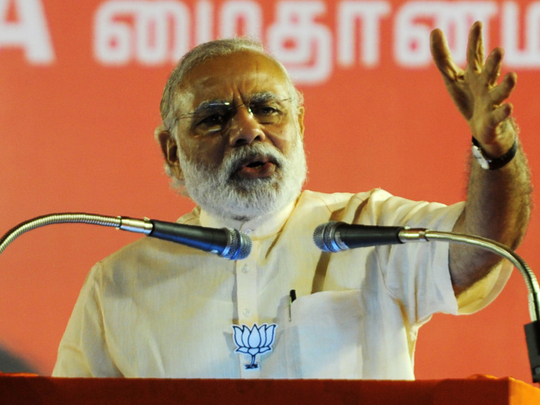
Prime Minister Narendra Modi won the general election in India two years ago this month. His party, the Bharatiya Janata Party (BJP), won a full and undisputable majority in the Lower House of parliament for the first time in 30 years, based on its promise of “acche din” (good days). However, two years later, India looks hardly any different and the promise of good days seems a distant dream.
There have been no distinct developments in any sector, with few jobs and even fewer reforms, and, more disturbingly, the government has developed a proclivity to get embroiled in juvenile debates fanned by right-wing fringe elements, thereby focusing less on the critical issues of governance.
To give the government credit where it is due, the macro-economic situation of India has improved drastically, mostly due to low commodity prices — particularly that of oil. The government has used that cushion prudently to reform the subsidies baggage, bringing in substantial money to the exchequer. Foreign investments have also picked up with Modi having transformed global investors’ perceptions about India, though domestic investors still lack the confidence to invest into the markets. Key indicators such as the ease of doing business have improved marginally, though they are still a far cry from what was expected of the Modi government.
The development of infrastructure has been a key demand of the people and there have been some improvements, especially in building roads, but the grand plans of bullet trains and better ports are still to see any substantial progress.
The Indian middle class, particularly those on social media who are considered the most vocal supporters of Modi’s jingoistic development plans, have found some solace in the passage of the Real Estate Bill, which protects buyers from unscrupulous developers. Also, the government’s urgency in dealing with Indians stranded overseas in war-torn countries such as Syria, has earned the applause of the people.
However, the biggest achievement of the government so far is its measure to ensure scam-free governance, whereby, ministers are focusing more on transparency and forcing bureaucrats to walk the straight path.
Though these seem impressive achievements, they are the least of what Indians had expected of Modi when they gave him a thumping majority in the parliament. There have been very little reforms, especially in significant sectors such as labour laws and industry, and the word disinvestment has disappeared from the government’s vocabulary.
The judiciary, police and administrative reforms, which are critical for the development of India, have been left untouched and until now, even Modi has not paid lip service to these areas of concerns. Also, floor management in parliament lacked the finesse that the BJP had shown during the elections, thereby obstructing critical bills such as the uniform sales tax bill, thereby severely crippling the country’s growth.
Many have described Modi’s performance as a glass half full. In the last two years, the government has launched various flagship projects, but surveys show that other than Swachh Bharat (clean India) and Smart Cities, not much has caught the imagination of the people. Schemes such as pensions for the poor and crop insurance, as well as welfare of the girl-child, have not created the kind of buzz that was expected.
In foreign policy, much of the successes of the government have been undervalued by the masses and, most importantly, the opposition has used Modi’s foreign trips to attack the government. Modi’s success has been significantly less with neighbouring countries, especially with Pakistan and Nepal.
Political developments, especially electoral loses in Delhi followed by Bihar, have forced the government to rethink its economic model and thus focus on agriculture-led economic growth, ignoring the promise of creating two hundred million jobs every year.
The global economic slowdown has not helped Modi in his ‘Make In India’ and ‘Digital India’ campaigns as foreign companies have shown little interest in setting up shop in India.
What is more disturbing is the fact that the government has become embroiled in juvenile skirmishes, focusing on changes in the dietary patterns of the people through bans and then allowing a post-doctorate student to behave like a national liberator, after he was found guilty of fanning anti-national sentiments. It has also allowed the fringe elements within the BJP’s larger political family to make irate and irresponsible statements, giving the so-called liberal, secular sections an opportunity to accuse the government and thereby distracting it.
Modi has to focus on deliverance and not announcement of grand schemes, as he is often criticsed for being a grand event-manager rather than a prime minister capable of delivering what he has promised to the masses.
The time for tinkering and sloganeering is over as the window of opportunity is slowly narrowing for Modi and he should focus on governance rather than allowing his party to seek political bravado in states like Uttarakhand as the third year has always been critical for governments willing to return to office for a second term.
Archisman Dinda is a journalist based in Kolkata, India.









